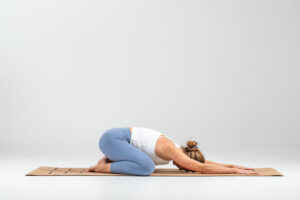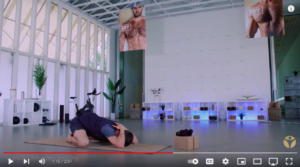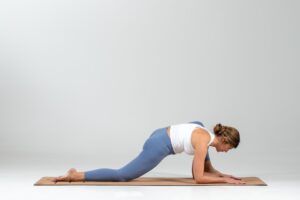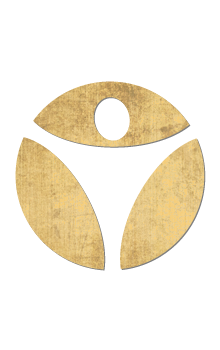How To Do Low Lunge For Beginners
- Updated on: November 3, 2021
Purpose
Here are some of the reasons why Low Lunge is good for you:
- Stretches quadriceps (fronts of the thighs), abdominals and hip flexors (muscles bridging the fronts of the thighs and the trunk providing stability for the trunk as well as forward bending)
- Strengthens glutes
- Improves balance and stability
- Stretches muscles of the chest and anterior shoulders
- Elongates spine
Pose Guide
In order to do Low Lunge correctly, here are the steps:
- Begin in Down Dog position.
- Inhale, shifting your weight to your left foot.
- Exhale, stepping your right foot forward. Plant your right foot inside or slightly behind your right hand.
- Shift your seat forward, stacking your right knee over your right ankle.
- Lower your left knee to the ground.
- Inhale, lifting your hands to rest on top of your right thigh.
- Gently press both feet into the ground for stability as you elongate your spine and lift the crown (top) of your head to the sky.
- Extend your arms overhead with palms facing each other. Lower your shoulders down and away from your ears.
- Engage your glutes and your abdominals to increase balance and stability.
- Repeat on the other side.
Practical Tips
Do This, Not That! Common mistakes beginners make on the Low Lunge:
- Rounding the back: A common mistake in the Low Lunge is to round the back. Rounding the back places stress on the shoulders and upper back muscles, as well as sets the stage for misalignment of the head and neck. For proper form, keep the back straight with the spine elongated, the chest lifted, core engaged and back of the neck in line with the rest of the spine.
Props and Modifications
You should consider a modification if you experience the following:
- Pain in the knees
- Excessive shoulder tension or pain
- Excessive back tension or pain
- Excessive flexibility in the spine:
- Difficulty maintaining balance during the pose
Pain in the knees:
- For tight, restrictive, injured or recovering knees, shortening the length of the lunge can be helpful. To do this, bring the grounded knee forward to decrease the fold in the front knee.
- Place a folded blanket or towel under the grounded knee to provide cushion, if needed.
- For tight, restrictive, injured or recovering knees, place a couple of bolsters or pillows under the seat to support the stretch in the thighs without putting weight on the knees.
- Pressing your back foot into the ground can also take some of the weight off the back knee during Low Lunge.
Excessive shoulder tension or pain:
- For excessive shoulder tension, acute or chronic shoulder injuries, or shoulders recovering from surgery, avoid raising the arms overhead. Instead, rest the hands on the raised thigh or on the floor beneath the shoulders.
- For tight, restrictive or injured shoulders, anterior pelvic tilt (excessive arching in the low back), or spinal injury: rest hands on blocks placed on the ground beneath the shoulders to alleviate strain
Excessive back tension or pain:
- When the back is excessively weak, tense or injured, and/or the abdominals are too weak to adequately support the trunk, modify Low Lunge by resting the folded arms on the seat of chair [placed in front of the front knee]. This can alleviate the tension of keeping the trunk elevated, while still providing the benefits to the lower body.
- Pinching or discomfort can occur in the low back due to an anteriorly tilted pelvis (excessive arching in the low back) and/or inactive or weak glutes or abdominals. To counter this, keep the core actively engaged while gently curling the tail under and slightly shifting the seat forward.
Excessive flexibility in the spine:
- To intensify the backbend, loop a strap around the back foot and hold the other end of it in your hands over your head. Adjust the length of the strap to achieve your desired stretch.
Difficulty maintaining balance during the pose:
- For balance issues, keep your hands on the floor.
- Alternatively, place chairs or other supports on either side of the pose to hold, as needed.
Commonly Asked Questions
- Can I do Low Lunge if I’ve had knee surgery?
- What muscles does Low Lunge work?
- When is Low Lunge contraindicated?
- How far forward should I lean in Low Lunge?
- How far back should I place the back knee in Low Lunge?
- Should I be putting weight directly on my back knee in Low Lunge?
Can I do Low Lunge if I’ve had knee surgery?
- As with any activity following surgery, it is important to have an open dialogue with your health care practitioner to determine what is okay to do when. Once you are cleared for yoga practice, you can modify Low Lunge using any of the options listed above for your comfort and protection.
What muscles does Low Lunge work?
- Stretches muscles of the thighs, hips, abdominals and chest
- Strengthens glutes
- engages legs, feet and arms
- elongates spine
When is Low Lunge contraindicated?
- Acute knee, hip, and spinal injuries
- high blood pressure and heart conditions
- vertigo and other impairments to balance
How far forward should I lean in Low Lunge?
- The fullest expression of Low Lunge is with the upper body completely upright with the crown (top) of the head and the hands reaching straight up to the sky. However, there are times when it can be beneficial to modify the pose by leaning the upper body forward and placing the hands on the floor or on blocks [on either side of the front foot].
How far back should I place the back knee in Low Lunge?
- There is no exact perfect distance between the back knee and the front foot. It should be as far back as is comfortable, while still keeping the front knee stacked directly over the front foot.
Should I be putting weight directly on my back knee in Low Lunge?
- No. The weight should be evenly distributed between the feet, with the knee just resting gently against the ground. Putting weight on the knee can create unnecessary stress and increase the potential for injury.
Additional Resources for beginners
Recent Posts
Categories
Related Articles
Related Articles

Yoga for better sleep – Childs pose vs Puppy pose
Today we’ll be touching on postures to do at the end of the day to aid in better sleep, or restorative poses if you haven’t

Unwind and relax with Childs Pose
In this video we’ll go over how a 2 minute child pose can help with better sleep. Start on all fours with toes touching

How to Do Lizard Pose: Strengthen Your Legs and Boost Your Hip Mobility
Purpose Here are some of the reasons why Lizard Pose is good for you: Stretches and opens the hips increasing mobility and flexibility Stretches and
